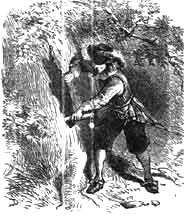Connecticut

The founders of the Connecticut colony were Thomas Hooker and Governor John Haynes of the Massachusetts Bay Colony. In 1636, Hooker and Haynes led 100 people to settle Hartford. Under the influence of Thomas Hooker, who was a Puritan minister, the settlers passed the “Fundamental Orders of Connecticut”. This document laid out the fundamental governing principals of the colony. Soon after the founding of the colony the settlers entered into a war with Pequot tribe. The settlers vanquished the Native Americans and forced them to surrender.
A separate colony was established in New Haven In the spring of 1638, when that city was founded. In the following two years additional towns were established at Milford, Guilford and Stamford. These cities, together with Southold on Long Island and Branford, became the republic of New Haven. The colonies in Connecticut flourished as separate entities. However, limited hostilities with New Netherlands convinced the colonies to combine. On May 30th 1662, King Charles II gave the colony of Connecticut an official charter. He granted the colony rule under the very constitution that it had approved (based on the Fundamental Orders of Connecticut). In 1687, the governor of New England demanded that the Connecticut assembly disband. Connecticut history developed its own lore when the charter of the state was secretly taken from the assembly and hidden in an oak tree that became known as the “Charter oak”. Two years later Connecticut returned to self-government.
The colony of Connecticut was a producer of wheat, and livestock. It was a significant exporter of lumber and a major shipbuilder. Connecticut was an overwhelmingly Puritan state, with the Puritan Congregational church being the only official church in the colony. Other religious groups were often persecuted.
 >
>